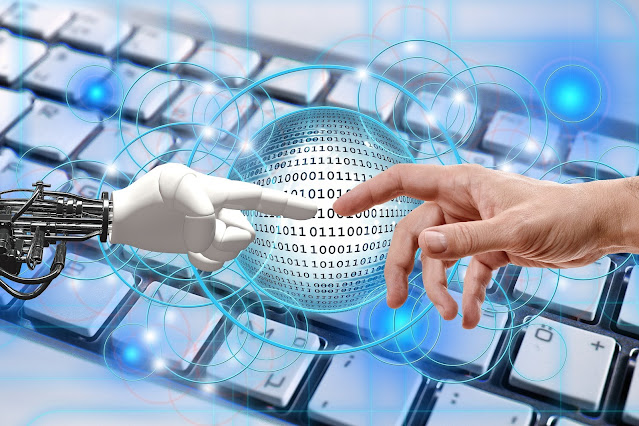Overview of the history of AI and its current state of development
Topics I am writing an article about are below:
Artificial Intelligence (AI)
Neural Networks
Computer Vision
Challenges in AI
Ethics and Responsible AI
Future of AI
History of AI
Development of AI
Deep Learning
Machine Learning
Expert Systems
Natural Language Processing
Reinforcement Learning
Virtual Assistants Industry Applications of AI
The field of Artificial Intelligence
(AI) has a long and storied history, dating back to the 1950s. Early research
in AI focused on creating machines that could perform tasks that would
typically require human intelligence, such as problem-solving and decision-making.
In the 1950s and 1960s, AI researchers
developed early computer programs that could perform basic tasks such as
playing simple games like tic-tac-toe and solving mathematical equations. These
early programs were based on rule-based systems and required extensive human
programming in order to function.
In the 1970s and 1980s, AI research
shifted towards the development of expert systems, which were designed to mimic
the decision-making abilities of human experts in specific fields such as medicine
and engineering. These systems used knowledge bases and inference engines to
make decisions and were considered to be some of the most advanced AI systems
of their time.
In the 1970s and 1980s, AI research
shifted towards the development of expert systems, which were designed to mimic
the decision-making abilities of human experts in specific fields such as
medicine and engineering. These systems used knowledge bases and inference
engines to make decisions and were considered to be some of the most advanced
AI systems of their time.
In the 1990s, AI research shifted
towards the development of machine learning systems, which could learn from
data rather than rely on human programming. This period saw the rise of
neural networks, which were modeled after the structure of the human brain and
were able to learn from data through a process called backpropagation.
Today, AI is used in a wide variety of
applications, from self-driving cars and speech recognition systems to virtual
personal assistants and image recognition systems. Advancements in deep
learning and neural networks have led to the development of highly accurate and
sophisticated AI systems, such as those used in natural language processing and
computer vision.
One of the most prominent areas of AI
is deep learning, which uses a large number of layers of artificial neurons to
learn from data. Deep learning neural networks are able to learn from vast
amounts of data and can be trained to perform a wide range of tasks, from image
and speech recognition to natural language processing and even game-playing.
Another area of AI that has seen
significant progress in recent years is reinforcement learning, which is based
on the idea of training agents to make decisions by rewarding or punishing them
for their actions. This approach has been used to train agents to play complex
games such as Go and chess at a superhuman level.
AI is also being used to create
intelligent virtual assistants, such as Apple's Siri, Amazon's Alexa, and
Google Assistant. These virtual assistants use natural language processing to
understand and respond to users' voice commands and can perform a wide range
of tasks such as setting reminders, playing music, and even ordering groceries.
AI is also being used in various
industries, such as healthcare, finance, and transportation. In healthcare, AI
is used for medical imaging analysis, drug discovery, and precision medicine.
In finance, AI is used for fraud detection, risk management, and portfolio
management. In transportation, AI is used for traffic management, self-driving
cars, and logistics optimization.
Despite the significant progress that
has been made in AI, there are still many challenges that need to be addressed.
One of the biggest challenges is ensuring that AI systems are reliable, safe,
and trustworthy. There is also ongoing research on how to make AI systems more
explainable so that people can understand how they work and how they make
decisions. Additionally, research is ongoing to make AI systems more robust and
less susceptible to malicious attacks.
Another important challenge is to
ensure that the development and deployment of AI is inclusive and equitable.
There are concerns that AI could exacerbate existing societal inequalities, and it could lead to job displacement. To address these challenges, it is
important to ensure that AI is developed and deployed in an ethical and
responsible manner and that its benefits are shared by all.
In conclusion, the field of AI has come a long way since its inception in the 1950s. Today, AI is used in a wide variety of applications and industries and has the potential to revolutionize many aspects of our lives. However, there are also many challenges that need to be addressed, including ensuring the reliability and trustworthiness of AI systems, making them more explainable and robust, and addressing potential societal implications. It's important that the development and deployment of AI are done in an ethical and responsible manner so that its benefits are shared by all. The future of AI is very promising, with many exciting developments and breakthroughs expected in the coming years.
History of AI Development of AI Deep Learning
Challenges in AI Ethics and Responsible AI Future of AI








0 Comments